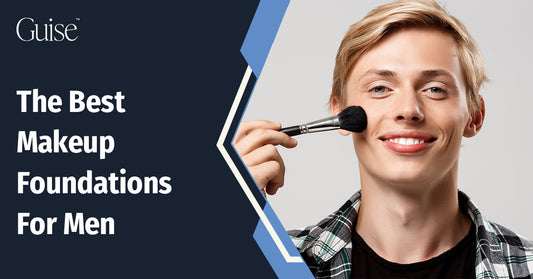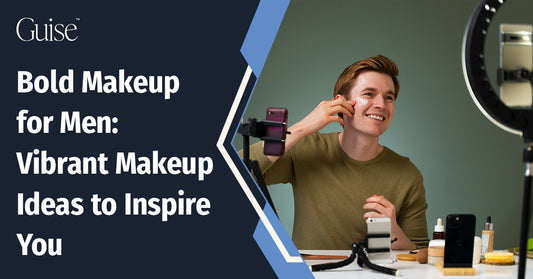Is your skin prone to breakouts, blemishes, and acne? Having acne, blemishes, or breakouts is frustrating, especially if you need to conceal them. It's not as easy as just putting on some makeup; if done wrong, it could actually make matters worse. But don't worry! With a few simple steps and the right products, you can easily disguise those pesky pimples for special occasions or even every day. Read on to learn how to cover acne breakouts and blemishes like a pro!
What Are Blemishes?
Blemishes are common skin conditions that can range from mild to severe. The most common causes of blemishes are hormonal changes, poor diet, overexposure to sunlight, or stress. Proper skin care is the key to preventing and treating blemishes. This means keeping your skin clean, hydrated, and protected from the sun. A regular skincare routine of cleansing, exfoliating, and moisturizing will help keep blemishes at bay. Cleaning helps remove dirt, oil, and bacteria from your skin that can cause breakouts. Exfoliating helps slough away dead skin cells, which can clog pores and lead to breakouts. And moisturizing is important for maintaining healthy skin. Maintain a healthy diet and exercise routine to overcome and mitigate these blemishes.
Figure Out the Type of Blemish You’re Dealing With
There are numerous types of blemishes that are present among the different individuals. The most common ones are acne scars that are easy to tackle with simple products and treatments.
Acne
Acne affects people of all ages. The main cause of acne is an excess production of oil by the sebaceous glands, which can clog pores and trap bacteria on the skin. Other factors, including hormones, stress, certain medications, and a poor diet, can also contribute to the development of acne prone skin.
Blackheads/Whiteheads
Small, dark spots known as blackheads are the result of clogged pores. Whiteheads, or closed comedones, are slightly raised bumps that occur when a pore is completely blocked with oil and dead skin cells. Both types of blemishes can be treated with exfoliation and topical products.
Pimples
Pimples, also known as “zits” or acne, are small red bumps that occur when bacteria and oil become trapped inside a pore. They happen when dead skin cells and sebum, an oily substance made by the body, clog up a pore and make a good place for bacteria to grow. Pimples can be treated with topical treatments and medications.
Ingrown Hairs
Ingrown hairs are a common skin condition, especially among those who shave or wax as part of their grooming routine. It is caused when the hair follicle becomes damaged and the hair grows into the skin instead of outwards. Swelling, itching, tenderness, and redness may be present with this type of ingrown hair. In extreme cases, it can become infected and require medical attention.
Birthmarks
Birthmarks are marks that are present on the skin at birth or shortly thereafter. They can be either pigmented (colored) or vascular (caused by an abnormal development of tissue below the skin’s surface). Pigmented birthmarks can range in color and size, while vascular birthmarks are usually red or purple. Most birthmarks do not require treatment and fade over time.
Ways to Cover Up
There are ways that you can cover your blemishes with products that are completely safe. Most individuals use them regularly in their skin care routine for this purpose. Common ways to cover blemishes include:
Concealer
A type of makeup used to cover up blemishes and dark circles around the eyes. It is typically applied directly to the skin with a brush or sponge and can be found in both liquid and powder forms. Concealer should match your skin tone as closely as possible, so that it blends in naturally with wear makeup on the surrounding area. For a more natural look, you should apply a light layer of concealer.
Foundation
Foundation is a type of makeup used to even out the skin tone and provide coverage to cover acne. It can be found in both liquid foundation and powder foundation and should match your skin tone as closely as possible. For a more natural look, you should use a medium coverage liquid mineral powder foundation, focusing on areas that need additional coverage.
Color Correction
This is a type of covering that uses different colors to match the color of the spot, which makes it less noticeable. For instance, green color correction is used to cover up the redness that appears on the face for those with acne.
Get the best quality vegan and fragrance free green stick color correction at Guise! There are various reasons that you should consider a color correction product for your makeup routine.
How to Choose the Right Concealer
Choosing the right concealer can be a bit challenging since there are many factors to take into account when applying makeup. These factors include:
Full Coverage
A full coverage concealer is a highly concentrated green concealer that does not leave any kind of mark behind. Although this might sound great, one thing to note about concealing acne is that too much of its application can result in a cakey or overdone appearance.
Mild or Light Coverage
Mild or light coverage concealers are a great choice for people who want their makeup to look more natural. These concealers have just the right amount of coverage, so you can still see your skin while hiding any imperfections. They are also less likely to cause cakey or overdone looks, as they are not as heavily concentrated.
Illuminating
Illuminating concealer is a type of makeup that is designed to add luminosity and brightness to the skin. It contains light-reflecting particles that provide a sheer, subtle glow to the skin. This results in improved radiance and fresh looking skin.
Waterproof
Waterproof concealers are made so that they won't run or smudge when exposed to water, sweat, or other moisture. They provide long lasting coverage and are an excellent choice for individuals with oily skin. Waterproof concealers typically have a thicker consistency than regular ones, so they should be applied lightly in thin layers.
Match Your Skin Type
It is essential to choose the right color correcting concealer to get a natural look. Before buying any product, one should always test it on a small patch of their skin and check if the color blends well with their skin tone. This step is especially important when choosing color correctors, as they require an exact match of the blemish’s color.
Applying the Concealer
For the application of the concealer, there are several steps that are ideally required for the process. To apply concealer, follow these steps:
Cleanse Your Skin
Before the process, make sure you cleanse and moisturize your skin for the best results apply concealer. This would result in getting the most duration from the concealer. Most concealers, when not applied properly, fade away over a short time.
Use a Brush or Sponge to Apply the Concealer
For the application of the concealer after cleansing and moisturizing, use the product as per its type. If it is a stick, apply it where the desired spot is on the face. Similarly, if it is in powder form, use a brush to apply. After applying yellow concealer, use a secondary brush or a makeup sponge to blend the product with your skin.
Step Back and Take a Look
After the process, take just a few minutes to step back from the mirror and take a close look at the results. This helps you understand how you will look throughout the day. You want to check the coverage, but also be sure the product is blended smoothly. If you are still in doubt, ask someone else to give feedback on the result.
Review the Product
After you’ve applied your concealer and have gone about your day, evaluate the product to determine if it met your expectations. Consider the application, coverage, and wear. This process helps you discover the best product for your needs and goals.






